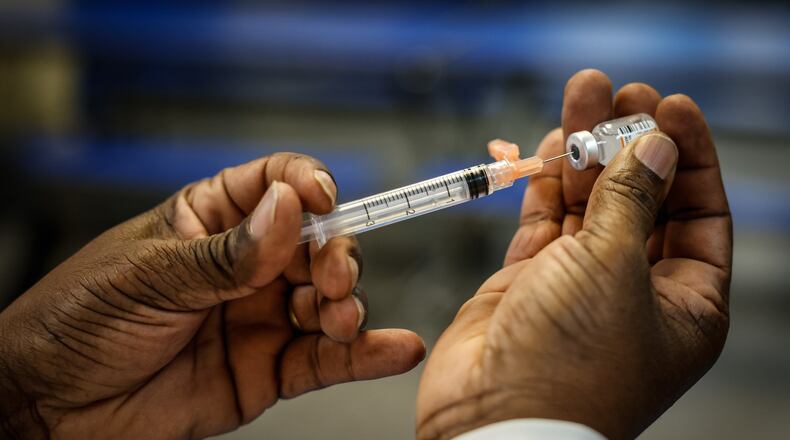The new case total was about 500 fewer than what was reported between March 11 and March 17. For comparison, during the first week of 2022, almost 169,000 cases were recorded in Ohio, according to the Ohio Department of Health.
State health officials previously said that while BA.2 appears to be more contagious than BA.1, the subvariant that led to the Omicron surge, BA.1 also appears to offer good protection against BA.2.
The new variant has caused an increase in cases in other parts of the world, but Dan Suffoletto, spokesperson for Public Health - Dayton & Montgomery County, said that doesn’t necessarily mean there will be a surge of new cases here.
“We are hoping to stay low but continue to monitor it,” Suffoletto said.
He noted that there have been different vaccine strategies employed to combat the virus in different countries.
Hospitals in better shape
In the Dayton region, there were 14 people hospitalized with COVID-19 as of Thursday, according to the local public health data. One patient was in the ICU with COVID-19.
That is dramatically lower than in January during the first Omicron surge, when more than 600 people were hospitalized locally.
“These lower COVID numbers mean it is a much less stressful time inside the walls of our hospitals right now,” said Sarah Hackenbracht, Greater Dayton Area Hospital Association President and CEO.
She said there is no longer a demand to open up special units for COVID-19 patients, and personnel aren’t being pulled away from their normal duties to staff those units.
“So now the hospitals are able to focus on those normal patient populations that we are accustomed to seeing and taking care of day in and day out,” she said.
Hackenbracht said there is an overall sense of relief in the hospitals, as the COVID-19 pandemic has been a very stressful time for caregivers. They have experienced trauma while aiding people who are suffering and dying from the disease, she said.
GDAHA continues to watch state data and continues to engage the region’s hospitals to prepare for any increase that may occur.
Vaccine, boosters help
But even with COVID-19 numbers much lower than before, health officials said those who are not vaccinated should still consider getting the shot. Suffoletto said case data has gone up and down repeatedly throughout the pandemic. It’s possible another surge could hit this year.
The CDC recommended this week an additional booster for people over the age of 50 who received an initial booster dose at least four months ago.
“This is especially important for those 65 and older and those 50 and older with underlying medical conditions that increase their risk for severe disease from COVID-19,” said Dr. Rochelle Walensky, the CDC director. “They are the most likely to benefit from receiving an additional booster dose at this time.”
The CDC said during the Omicron surge, people who were boosted were 21 times less likely to die from COVID-19 compared to those who were unvaccinated. They were seven times less likely to be hospitalized, the CDC said.
About the Author

